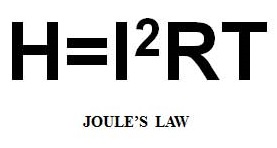
Controls & Transformers
Questions and Answers
Force is one of the main inputs of the weld machine in the form of pressure exerted by the electrodes on the work piece. The main function of this force is to contain the weld by holding the work pieces together tightly during the welding operation. Stronger work piece materials require higher welding forces than weaker work pieces. With adequate force the contact resistance between the electrode and part is minimized and more energy is transmitted into the part to heat the interface between the two sheets being welded.
Pressure is one of the three major inputs of the machine, pressure, current and time. Pressure is called out as force in weld schedules. Force per square inch is pressure. When pressure is applied and the electrode makes contact with the part, there is a contact resistance at that joint. The amount of this resistance changes with the amount of force/pressure being applied.
JOULES LAW STATES:

In this equation the current, resistance and time are the variables. The controller or timer can alter both the time and the current. The resistance of the parts being welded is fixed but the resistance can be changed by altering the force/pressure used in the welding process. The question is which will have the largest affect upon the process. The answer is the current (I).
Per the definition of the Resistance Welding Manufacturers Alliance:
RESISTANCE WELDING IS THE JOINING OF METALS BY APPLYING
PRESSURE
AND PASSING
CURRENT
FOR A LENGTH OF
TIME
THROUGH THE METAL AREA WHICH IS TO BE JOINED
Reference: RWMA - Resistance Welding Manual 4th Edition
Weld schedules are available in the Resistance Welding Manual and AWS Standard C1.1 for many of the most frequently used materials. The information commonly provided is the proper electrode design, size and material. The weld force, weld time and weld current are also published. The minimum distance between welds is usually listed and the expected nugget or button size is shown. Tensile properties frequently are also published. Other sources widely distfributed are the Tuffaloy and CMW Catalogs.
Page 34 of 39
Have a Question?
Do you have a question that is not covered in our knowledgebase? Do you have questions regarding the above article? Click here to ask the professor.
